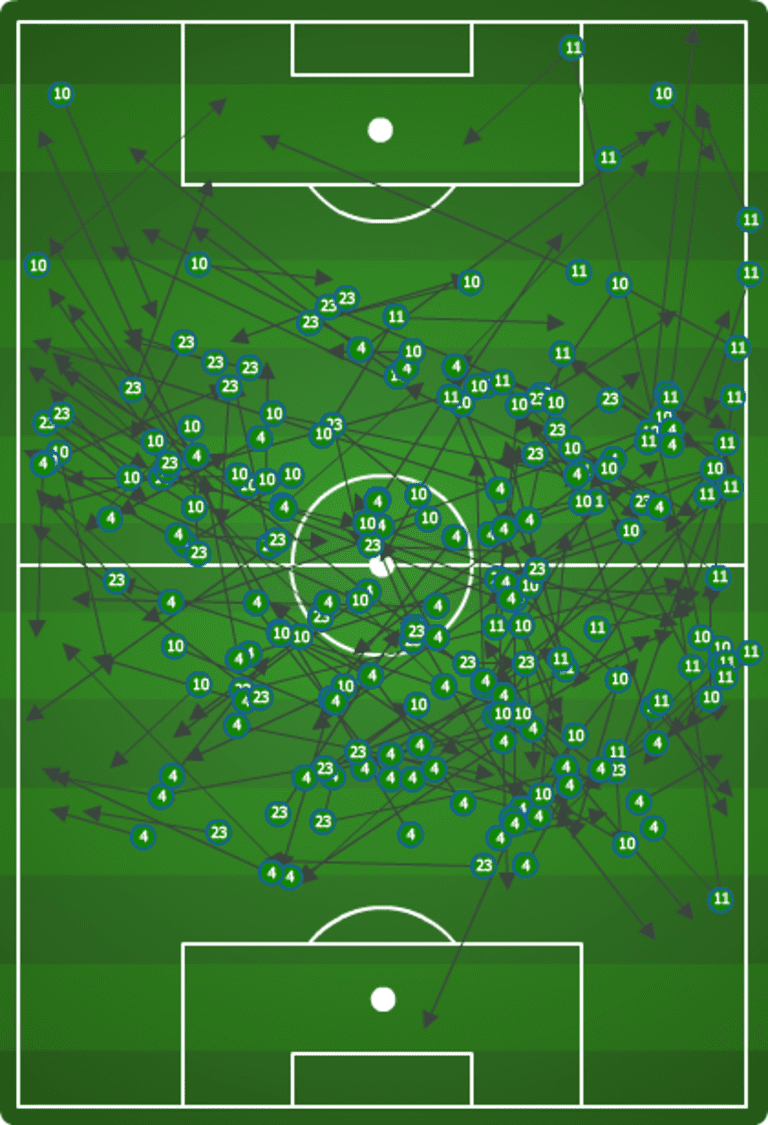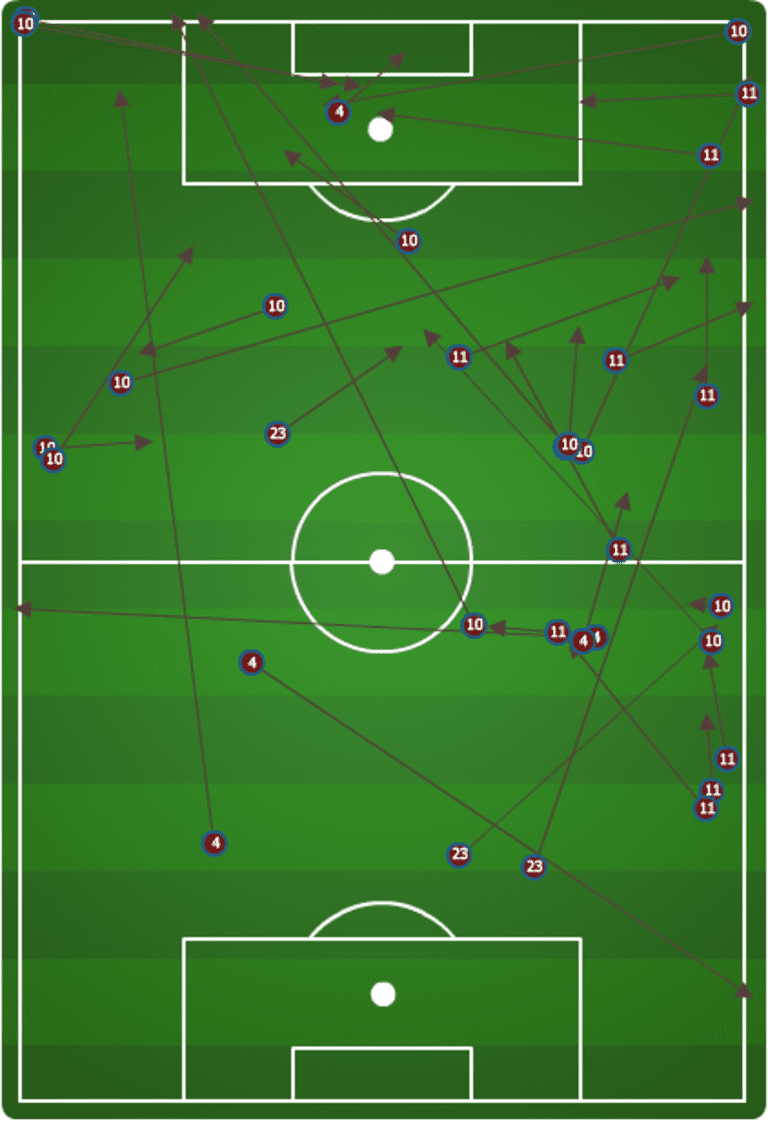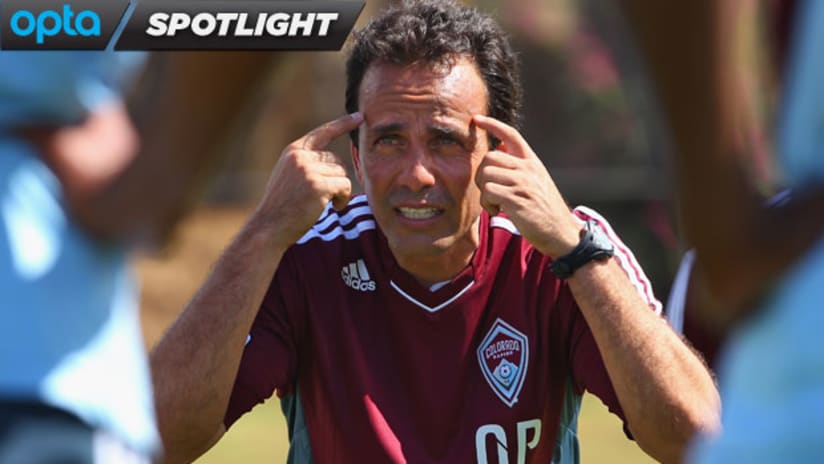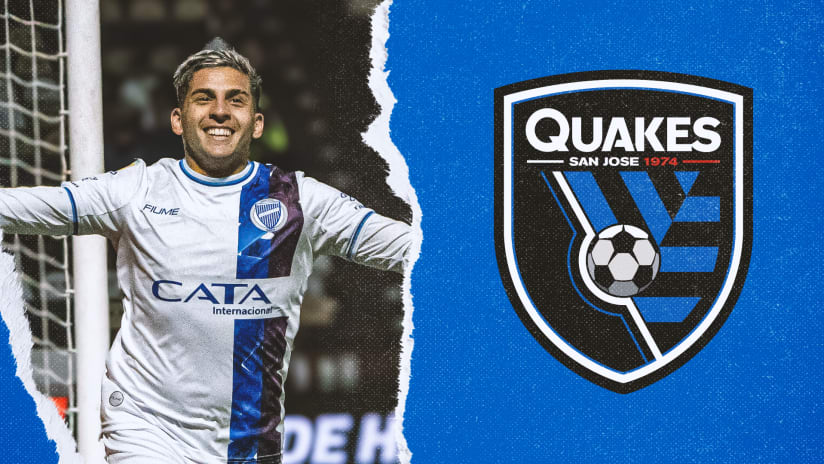The refrain was admirable, if not entirely predictable.
Upon introducing Oscar Pareja as Gary Smith’s replacement in January, the Colorado Rapids declared the hire a transition away from the Englishman’s pragmatic approach to a flowing, possession-oriented style of play, one with some attacking panache that would be built upon a 4-3-3 foundation.
Pareja preaches possession in Colorado
"It's not just about scoring a goal," Rapids technical director Paul Bravo said at the time. "It's about how you get there to do it. We want that style for 90 minutes.”
And, all things considered, what else was Bravo supposed to say? That the Rapids wanted to be even more direct? That they were aiming for nil-nil with a few 1-0 victories sprinkled in for good measure?
WATCH: Colorado vs. Sporting KC, Saturday at 9 pm ET, MLS LIVE
Now, roughly a third into Pareja’s first season in charge, seems like an apt time to determine whether Bravo was all talk or if Colorado (5-6-0) really have changed their stripes. After all, it certainly wouldn’t be the first time lip service was paid to attractive play only for results and personnel to force a hasty U-turn.
Based on the numbers, though, it appears Bravo, Pareja and the Rapids have indeed ushered in a new era in Colorado. They’re among the best in the league at keeping the ball. They’re creating more chances. In short, they’re already delivering on January’s lofty promises.
In a strictly big-picture sense, Colorado are the second-best side in MLS at keeping possession this season, holding the ball 54.73 percent of the time, behind only Sporting KC (55.07 percent). That’s a nearly five-percent increase from 2011, when the Smith-led Rapids found themselves in the middle of the MLS pack with a mark of 49.96 percent.
| Possession in Colorado, 2011 vs. 2012 | ||||||
| Year | Average possession | Passing accuracy | Passing accuracy (forward passes) | Percentage passes defensive third | Percentage passes middle third | Percentage passes final third |
| 2012 | 54.73% | 78.99% | 64.15% | 18.91 | 53.92 | 27.17 |
| 2011 | 49.96% | 74.29% | 57.77% | 21.08 | 50.94 | 27.98 |
Similarly, only Real Salt Lake have completed more passes in 2012, and no team has a better passing accuracy through the season’s first two months (78.99 percent). Predictably, the jump in possession correlates to better passing accuracy, which has jumped nearly five percent from 2011 (see chart at right).
And while these developments give some insight into the club’s philosophical and tactical change, they only scratch the surface of what Pareja and his team have accomplished, despite a distinctly up-and-down start from a strictly results perspective. Sure, they have the ball more often, but has that equated to a more potent attack?
The answer, as it turns out, is a resounding yes, an improvement that’s based on an increase in the efficiency of forward passes, possession further up the field and overall chances created.
One of the supposed hallmarks of an attacking side is a proclivity to play the ball forward, as opposed to simply circulating it from side-to-side and backward without truly probing the opponent’s defensive shape. Surprisingly, Colorado are actually attempting fewer forward passes per game in 2012 (178 vs. 187 in 2011), but they are completing more of those attempts (114 vs. 108) and at an MLS-best 64.15-percent clip as opposed to the 57.77 mark recorded under Smith’s leadership.
That would seem to make sense based on the direct style employed in past campaigns. Rather than direct hopeful balls over the top for the likes of Omar Cummings, Caleb Folan and, before he tore his Achilles, Conor Casey, the Rapids are picking their spots and attempting higher-percentage passes, resulting in fewer attempts to move the ball forward but better results when they do push ahead.
By not bypassing the midfield, Colorado have also seen the percentage of their total passes in that portion of the field rise from 50.94 to 53.92 percent, while the ratio in the attacking third has stayed roughly the same. That suggests that the midfield is more likely to combine with each other instead of constantly looking up field. See the passing charts from the Rapids' 2-0 victory against Chivas USA below for a graphic representation of how efficient Colorado's midfield – in this case Jeff Larentowicz, Martín Rivero, Jaime Castrillón and Brian Mullan – has been this season.


Of course, philosophical changes can only truly take hold with the right personnel, and it seems Pareja’s roster shuffling has hit all the right notes so far.
The most important developments thus far have been the introductions of Castrillón and Rivero into the midfield as the creative fulcrums, while stalwart Larentowicz has played in a deeper position free to focus on facilitating possession and recovering the ball.
| Chances created in Colorado, 2011 vs. 2012 | ||||||
| Year | Min/Chance created | Min/Shot | Min/Shot inside box | G/Shots inside box | Shooting accuracy inside box | Percantage of shots inside box |
| 2012 | 8.61 | 7.80 | 13.94 | 16.90% | 47.89% | 56.35% |
| 2011 | 11.52 | 10.21 | 19.82 | 20.83% | 45.83% | 51.53% |
The result has been a marked increase in the frequency with which Colorado has created chances and taken shots, especially inside the penalty area (see chart). The bulk of those chances are being created by Rivero, who is setting up a teammate once every 27 minutes on the field, but Kosuke Kimura, Mullan and Tony Cascio are also making crucial contributions.
Of course, that increase hasn’t been reflected in the one stat that matters most: goals scored. Colorado are averaging 1.36 goals this season, up from 1.29 in 2011, but that has much to do with the absence of a proven finisher in Casey, the fact that Rivero and Castrillón are still adapting to MLS and Cummings’ move to the center forward and recent injury. The next logical step is for Colorado to start finishing the chances they are already creating, an effort which will center on Casey's return to fitness and form and how quickly Brazilian attacker Edu makes his presence felt.
Still, it is clear that Pareja – through shrewd additions and a tactical shift – is beginning to accomplish the things Rapids brass expected of him when he was hired at the beginning of the year. Colorado may not be playing flowing, attacking soccer for 90 minutes just yet, but they’re certainly on the right track.














